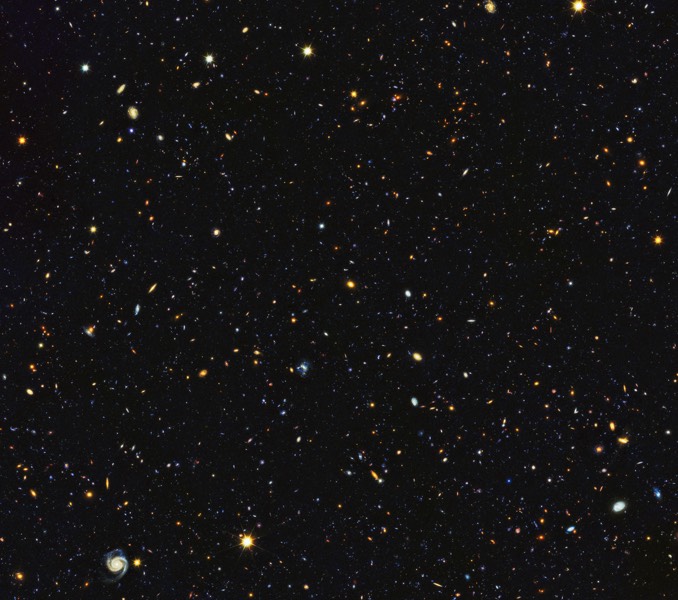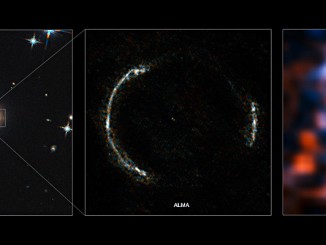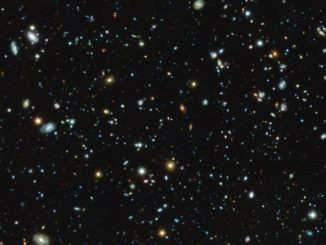Astronomers using the Hubble Space Telescope have assembled a stunning image showing some 15,000 galaxies, about 12,000 of which are seen in the process of forming stars. Combined with visible-light and infrared data from Hubble and ground-based telescopes, the Hubble Deep Field UV image provides “one of the most comprehensive portraits yet of the universe’s evolutionary history,” NASA says in an on-line description.
“The image straddles the gap between the very distant galaxies, which can only be viewed in infrared light, and closer galaxies, which can be seen across a broad spectrum,” the release says. “The light from distant star-forming regions in remote galaxies started out as ultraviolet. However, the expansion of the universe has shifted the light into infrared wavelengths. By comparing images of star formation in the distant and nearby universe, astronomers glean a better understanding of how nearby galaxies grew from small clumps of hot, young stars long ago.”
The image, showing a region in the northern constellation Ursa Major, is a mosaic 14 times the area of an earlier Hubble ultraviolet deep field image released in 2014.




